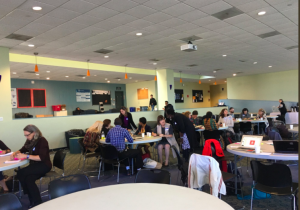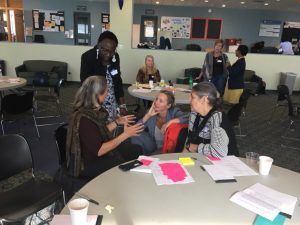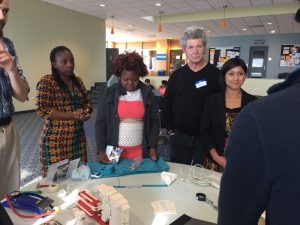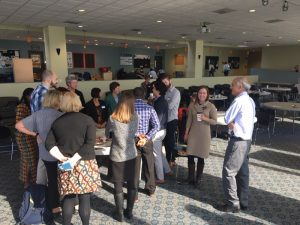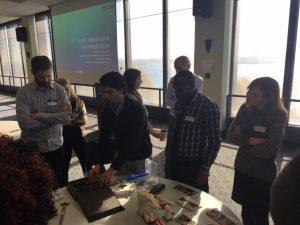Good morning. My name is Julie Anathan, Associate Chief Nursing Officer at Seed Global Health. I’d like to start by welcoming our guest speakers, Catherine D’Ignazio, Rebecca Michelson, Anna Young and Rebecca Love. Thank you for joining us and providing us with the inspiration and expertise around the exploration of technology and innovation for global nurses across education and practice.
I’d like to also extend a special note of gratitude to Dr. Thompson for hosting and joining us here today. As I understand it, UMass Boston provided the platform for the IDEAS UMass Boston, which brought diverse thought leaders together to build networks and create opportunity to foster innovation. Today represents an opportunity to keep that flame bright, here at UMASS, with this important focus on the intersection of technology, innovation and nurses across the globe.
In light of that, I also want to extend gratitude to The global nursing caucus, Nancy Street, Monica Onyango and Amanda Hart for your vision and commitment in making today happen.
My perspective for today’s conversation is grounded in nursing education. I’ve been incredibly lucky and honored to partner with nursing faculty across 21 nursing schools across 5 countries in SSA through Seed’s partnership with the Peace Corps and PEPFAR for the Global Health Service Partnership. Over the last 4 years, I’ve done my best to lend a keen ear and watchful eye to the critical needs and goals across many of these institution. As a result, the question that will reside in the back of my mind today is this: “how do we use innovation to close the theory – practice gap” in areas of the world where nursing students who graduate today are not ready for practice tomorrow. The challenges that lead to this reality are complex, but suffice it to say, nursing students are graduating without the required skills and confidence to begin their careers at the bedside.
I know for a fact that nursing innovation in nursing education is all around us. My friend and colleague Elisa Vandervort, here in the audience, is a midwife and was a Global Health Service Partnership Volunteer in 2015-6 in Tanzania. She didn’t have access to expensive simulation equipment to teach her midwifery students the correct hand maneuvers for a healthy delivery. Elisa found a big box and a pair of scissors, cut a hole in the bottom of the box and voila, a home sewn baby doll could be born.
I’d like to also acknowledge Peter Cardellichio in the audience. Peter is the Associate Director of the Global Health Media Project, an organization that is headed by a midwife and an organization that has mastered the art of bringing audio/visual learning to limited resource settings through their beautifully crafted, well written and easily downloadable videos.
While innovation resides in both the practice and educational settings, we may not know about it. As Jose Gomez – Marquez and Anna Young wrote in their important article called “A History of Nurse Making and Stealth Innovation”,
The lack of recognition for maker nurses has a serious downside: All too often, nurse made solutions do not spread beyond their unit where they are created. As a result, care that could be improved isn’t, and the patients who could be helped aren’t. Everyone loses. By nurturing nurses’ creativity and ingenuity and providing them with support to not only realize their ideas but disseminate then into mainstream practice, we can advance patient care”.
For the academics in the room, I might also ask for us to begin thinking about what rigor needs to be applied to innovation for dissemination in open access.
In summary, by being here today, we are demonstrating a commitment to our duty to nurture nursing creativity and ingenuity, provide nurses in practice and education with the support needed to realize their ideas, disseminate them into mainstream practice, and advance the profession of nursing across the globe.
